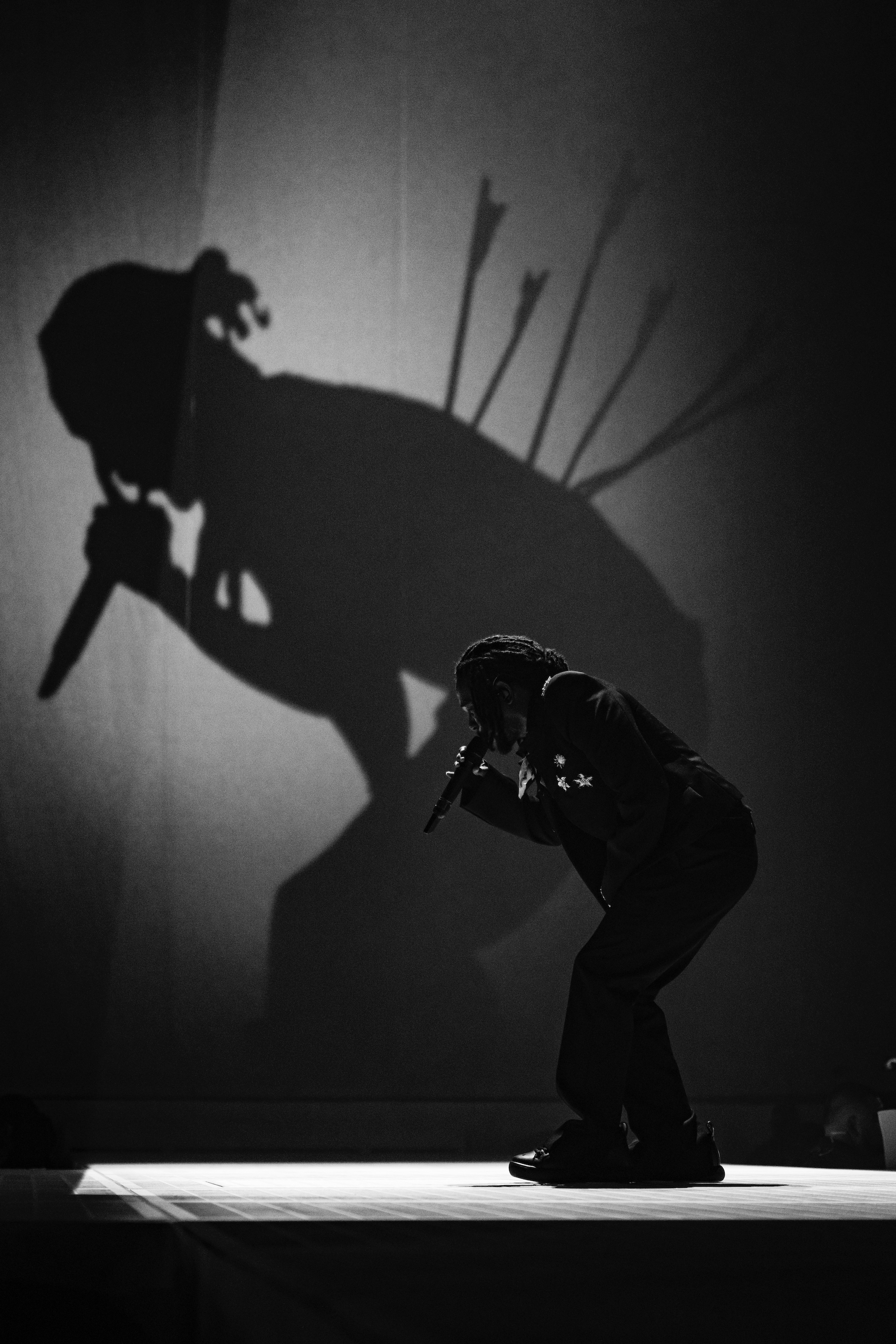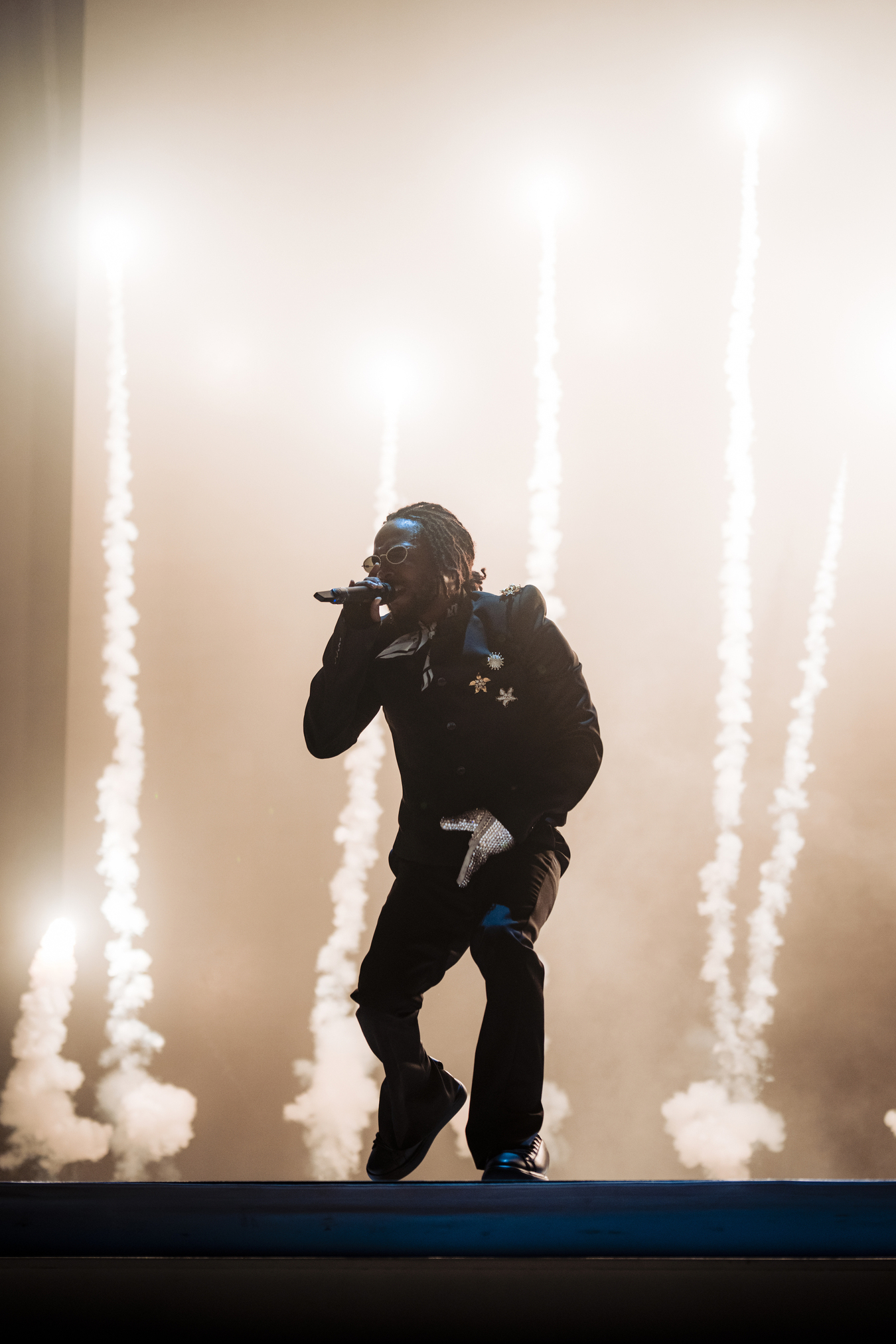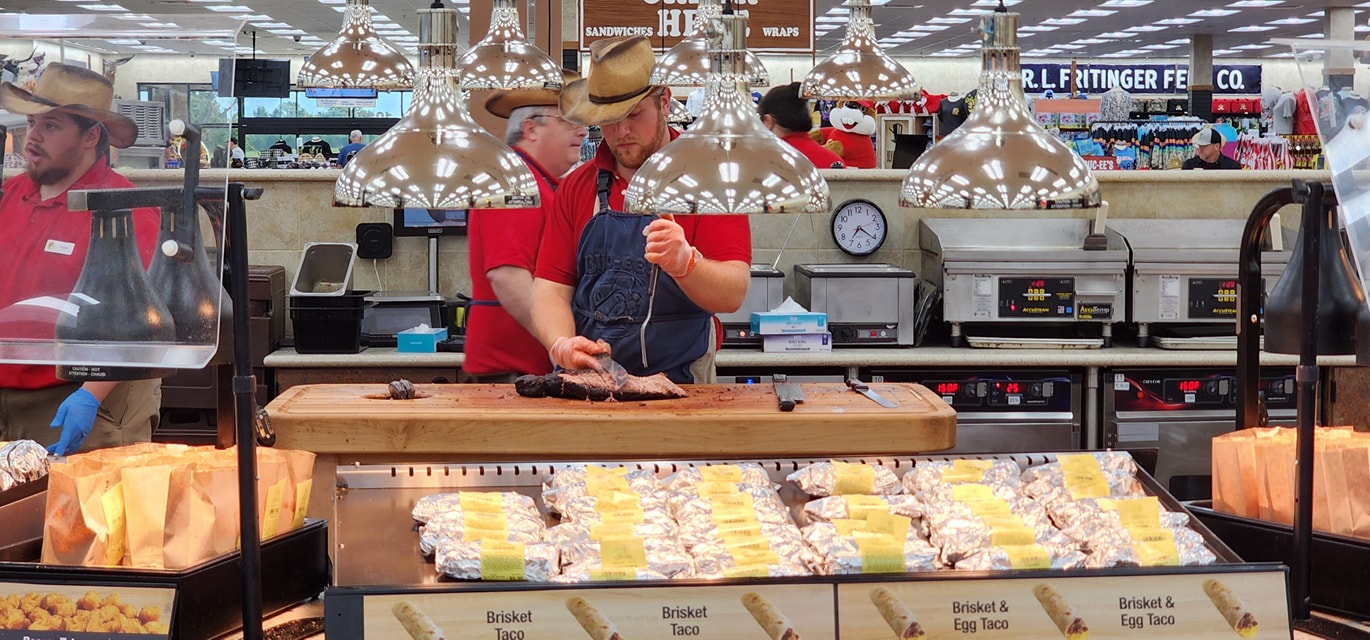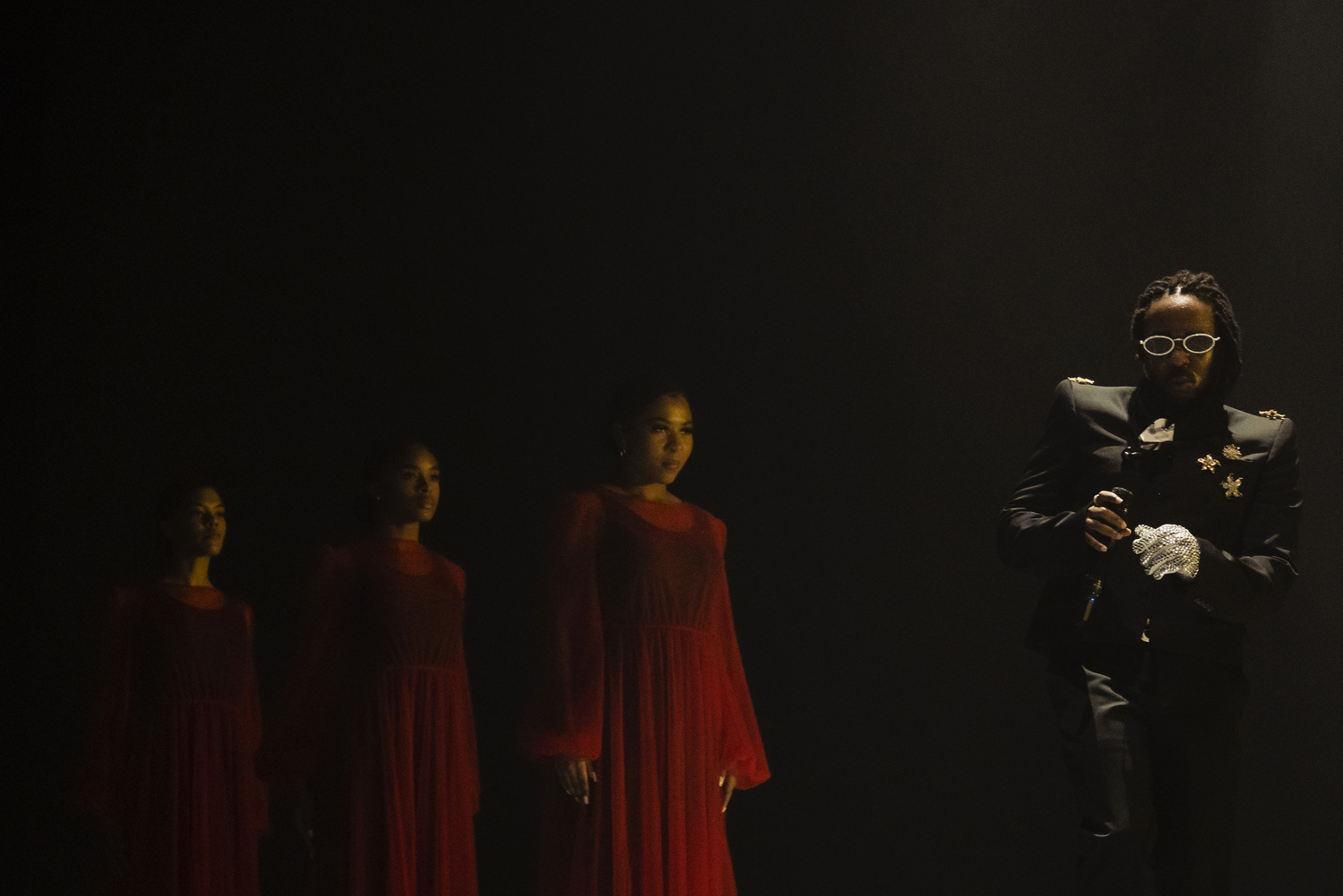Compton’s prophetic son isn’t in the music business. He’s in the human business. The stories he tells are woven together with raw feeling and emotion in mind. Good kid, m.A.A.d city, Kendrick Lamar’s breakthrough gift to mankind, allowed listeners a chance to peer through a window into a vivid world — miles away for some, countries away for others and many lives away for most. But deep in our bones, we felt it. The project established a lens by one of art’s great observational minds. A human just like you or me, but a brilliant one with many tales to tell, and a natural way of doing so. Mr. Morale & The Big Steppers, Lamar’s first record in one thousand, 800 and 55 days (a span in which he makes clear, he was indeed “goin’ through somethin’”) deals with grief, viruses, demons, daddy issues, girlfriend issues, money, the streets, the stage, identity and the ever-perplexing sense of self. By Lamar — or any artist’s standards — the album is deeply human. So too is his aptly titled ‘The Big Steppers Tour,’ a live exhibition that tethered Denver fans to Lamar’s psyche last Tuesday night.
Fans toppled over each other inside the steep tiers of seating at Ball Arena. Any show at the venue that features crammed floor general admission is due for an exciting spectacle. This was especially true for this particular show, whose stage featured a long, thin, I-shaped extension that parted the sea of fans equidistantly down the middle. An argument could’ve been made for two locations being “center stage” — but during Baby Keem’s opening performance, the smaller, square stage at half-court was covered by black sheets. Following a versatile undercard by Tanna Leone, featuring many songs from his debut pgLang recording, Sleepy Soldier, the newfound collective’s eclectic second piece set the venue ablaze with house-shaking songs off the melodic blue and DIE FOR MY BITCH. Keem opened with “trademark usa,” the explosive intro track off his latest album that symbolized growth and progression in trap music for Lamar’s cousin upon its release.
“Scapegoat” is maybe Keem’s most interesting song to date, and he performed the clear, concise piece to perfection. The record uses an isolated, pitched-up sample of serpentwithfeet’s “redemption,” angelic in delivery, and perfectly paralleled by Keem’s contrasting tone and lyricism about familial loss. It’s a somber tune that reflected Keem’s transition to a more vulnerable approach on the melodic blue, further cemented when he performed “issues” and “16” on the back end of his set. Do not get it twisted though — Keem’s 45-or-so minutes oozed with airtight bangers. “MOSHPIT” was fitting, and had the crowd doing exactly what you’d expect. Rocking a black jumpsuit, leaping up and down on a white square stage with mesh grating, Keem went berserk performing his collaboration with Kanye West, “Praise God.” The speed and mood of the show flipped back and forth repeatedly. Never more clear than his two feature hits, the addicting “Orange Soda” and the sludgy, warm “HONEST,” a track he sang under a harvest moon on the video board, and autumn orange lighting. Switching between reflective ballads and proud, aggressive rap anthems seems to be a family trait.

White curtains fell over the stage. Just like Lamar’s vulnerability in verse, they’d be opened and closed over and over again throughout the show. To stage right, there was a full chamber band, like the Oscars. When the stage was revealed, a man in a black suit, diamond Cartier shades and a glistening glove sat at a piano, with his back turned to the gallery. A ventriloquist dummy resembling Lamar perched atop the piano, and across the way, four women in all white crammed together on a twin bed. When Lamar played the show (and album’s) first note (a single key at the beginning of “United in Grief”), two lights flashed on, illuminating the abstract stage formation. The four women were just a few of the many dancers and performers that’d accompany Lamar throughout his live adventure. “HUMBLE.” had several dancing in circles around Lamar. “Die Hard” featured four ladies in red dresses following his movements in a line. “Bitch, Don’t Kill My Vibe” featured one in red, who appeared to be assisting Lamar’s actions during the record. Before “N95,” the album’s second song, and the most streamed to date, Halle Berry’s voice came over the loudspeakers. She exclaimed, “You’ve been in your comfort zone for 1,855 days,” before fireworks and bright white illumination brought Ball Arena to life. “ELEMENT.” allowed for the chamber drummer to do his thing. Instead of clanging 808’s, the percussionist added oomph and sharpness to one of DAMN.’s most prominent tracks.
“Backseat Freestyle” and “Rich Spirit,” two songs released a decade apart, played back-to-back fluidly. By this time, the long stage extension that stretched through the crowd had been completely exposed, and Lamar was about halfway down the walkway, as a big square light — like one you’d see in a greenhouse over spores — descended from the rafters to just above Lamar’s head, like an alien spaceship ready for abduction. “M.A.A.d. city” has become a staple of any rap set DJ’s pump-up segment. But to hear it performed by the man who conjured up the seminal record, in front of a video board picture of his head filled with images of Compton/Watts, was simply amazing.
“LUST.” and many other notable songs were used as interludes. This is not to say they weren’t performed — during “LUST.” Lamar laid down on the same bed from earlier, which was now in the middle of center stage, as the same extraterrestrial light fixture re-descended upon him, this time in a deep blue.
“DNA.” is one of Lamar’s best songs for so many reasons. Live, it blew most rap tracks out of the water, particularly during its back half, which is typically pivoted by commentary on Lamar’s lyrics from “Alright” by Fox News anchors. Red lights reigned supreme during the show. When featured, they marked energetic moments, ushering in crowd pops from the front row to the nosebleeds. Towards the end of the set, the entire venue was flushed a deep red, and Baby Keem re-emerged, ascending from beneath the stage on a lift, facing Lamar who stood halfway across the arena. And thank God, they played “family ties” — bringing the roof down in the process.

Amongst a show overflowing with unforgettable moments, one stood out above the rest. It felt like the overarching summary of the performance — resounding, considering the album being displayed has so many themes. Kendrick Lamar’s opus record is, many would agree, “Alright,” from his critically acclaimed album To Pimp a Butterfly. Pitchfork called it the best song of the last decade. It became the soundtrack of a movement against injustice, years removed from its inception. The song is a beautiful reminder from Lamar to the human species that hope is a powerful thing, and better days are always yet to come.
At the end of his I-shaped stage, zipped up in a sealed transparent cube, with men in hazmat suits at each corner of the quarantine station, Kendrick Lamar reminded the people of Denver, who were going apeshit to the song, that those four words in the chorus will always ring true.
It wasn’t music business — it was human business.





